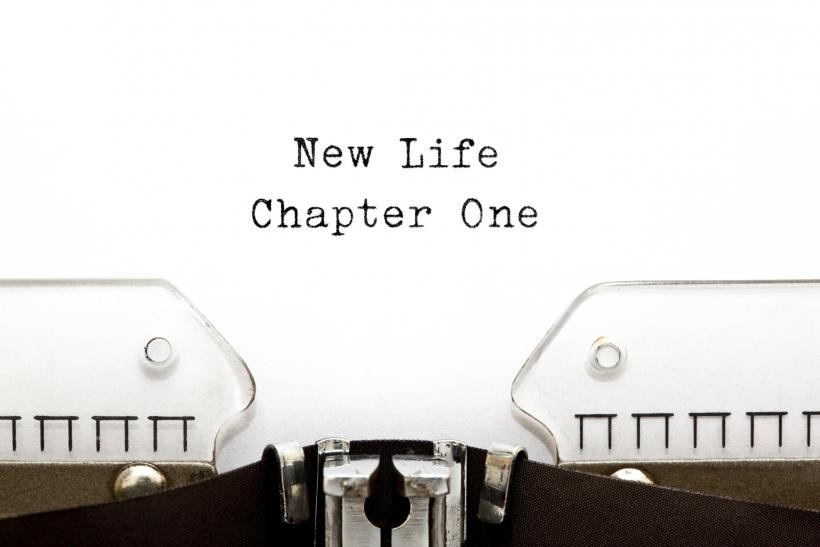
Thinkstock
I’ve been worried about the erosion of reproductive rights. I’ve imagined these all leading to a dystopian hell where women are arrested for miscarriages and families facing infertility are denied the procedures that would allow them to bear children. Silly, naive me. I hadn’t noticed this has already come to pass and is much worse than I could have ever imagined.
The New York Times recently published an op-ed about these horrors. The stories are something that might fit better in The Handmaid’s Tale. A Louisiana woman jailed for a year for a second-degree murder investigation over a miscarriage. Forced cesareans in Florida and DC, one resulting in the death of the mother and child. Far from being horrific outliers, these incidents are disturbingly common; 380 since 2005 and the publishing date of the NYT article.
When you make something illegal, you have to consider the enforcement. Who is being prosecuted? Are the pro-life groups willing to face the ramifications of arresting not just the physicians, but the women? Women who may have families, who suffered a natural or accidental miscarriage, women who give birth to stillborn babies, a pregnant woman who discovers 16 weeks into her pregnancy she has an aggressive form of cancer? Regarding one case, in an NPR article published in 2012, the Susan B. Anthony List’s president Marjorie Dannenfelser stated, “We do not think women should be criminalized. Criminal sanctions or any kind of sanctions are appropriate for abortionists, and not for women.” However, these laws do not allow any room for the various situations that arise during pregnancy or in trying to get pregnant. And frankly, the whole debate is getting us nowhere.
A wise politician (yes, they exist) once told me about working across party lines, “You have to focus on the shared values.” The abortion rights debate as it stands now is one that is impossible to resolve because the two sides have fundamentally different views: Pro-choice is about the woman’s rights, and pro-life is about the fetus’s rights. Neither side acknowledges the other should have rights. As such, we have an impasse and people are getting lost and hurt in the middle.
The discussion needs to shift from one of legality to one of reducing abortions. Please go with me on this and ignore the question of whether this is something the government should be involved in at all, as that too leads us back to the impasse. The typical answers are comprehensive sex ed and access to birth control. Unfortunately, this runs into the impasse as well since the religious sectors of the pro-life camp are generally against birth control. They feel fertility is not a disease, and therefore birth control is sexist against women and natural femininity, and birth control is part of a culture of death. They advocate for a culture of life. Since pro-choice is not necessarily pro-abortion, a culture of life could be that shared value.
Okay, so let’s imagine a culture of life. Let’s rewrite the novel and call our main character Hester Prynne.
* * *
Hester is in 5th grade health class learning about reproduction. In addition to the medical illustrations, Hester is taught about her natural fertility cycle. She learns about the phases in each cycle and physical signs of their occurrence. She sees pictures of egg white cervical mucous, a sign of being fertile. She thinks all this is a bit gross, but finds it interesting too. Like the way she feels about spiders. She learns about conception and fetal development. She sees color photography of fetuses growing in their mothers’ wombs, at various points in the process, like the kinds of pictures her mom looks at on the Internet pregnancy support sites. Her mom is pregnant with Hester’s little brother. Hester thinks sex is gross, even though the teachers and her parents have told her about its pleasurable and holy aspects. To Hester, birth control isn’t necessary because why would anyone want to have sex?
Hester is in 6th grade and her class is learning about babies. She learns about breastfeeding and infant care. She learns about infant development. She likes to share with her class her stories about her little brother, who is almost 1. She wishes she could bring him to class for show and tell.
Hester is in 8th grade and has fallen in love with a boy. She has confusing feelings about him. She wants to be close to him and wishes he would kiss her at the school dance. She learns more in health class, but sex isn’t on her mind yet.
Hester is 16 and she’s been dating the boy for a year. They are madly in love with each other in the gut-wrenching way teenagers fall in love. He invades her thoughts at all times of the day and she longs for the next time they will be in each other’s arms. One passionate night in the back of her mom’s van, Hester and her boyfriend make love. Although armed with years of education, the two did not procure a condom. Hester gets pregnant.
Her boyfriend freaks out for a moment, as does Hester, but both their families are supportive of the young couple. Hester’s counselor works with her teachers to support her education through her pregnancy. The kids at school are kind, and very curious about Hester’s growing belly. They ask her lots of questions and her friends help her prepare for the baby. No one makes fun of her. No one ignores her. No one slut shames her. Hester’s mom and dad both take some time off work as the due date approaches. Hester gives birth to a baby boy, surrounded by family. She finishes her senior year over the summer, and gets her GED. Her parent’s health plan covers her maternal care and birth, and Hester is able to receive supplemental care through a state program for mothers and children.
The government heavily subsidizes higher education, and the university provides free child care. Hester and her boyfriend have broken up, but she still has the support of her community. Mother outreach groups on campus and friends help her care for the now-toddler, as Hester finishes her degree. It takes her six years instead of four, but she manages.
Hester is now ready to start her career. She loves her job as a social worker and meets a young man at a non-profit networking event. They fall in love, date, and get married. As a young couple, they make a decent wage, but things are still tight as they support their small family. Hester gets pregnant again, this time with twins. Her healthcare plan provides excellent maternal care and the high-risk pregnancy and birth cost the family a mere $1,500 out-of-pocket. Hester and her husband’s offices provide paid parental leave so they are able to care for their new additions. The health plan provides for doulas and nurses to make calls on the family to support them through the first few months.
Back at work after six months, Hester is supported in her choice to continue breastfeeding. Subsidized childcare helps Hester and her husband keep working. Neither career encourages over a 40-hour work week, so the two have ample time for their family. Hester’s husband decides to work a four-day workweek so he can be home one day a week with the children. Hester decides she would like to be a part-time stay-at-home mom, so her office allows her to switch to a 24-hour work week. Neither are penalized for this choice, but are encouraged. When Hester is pregnant with her fourth, she has no fears of supporting her family.
Hester is rather lucky. She has a supportive family. A supportive husband. Supportive friends. Social services help with the finances. A positive family-oriented employer help her balance career and family.
You shouldn't have to be lucky. This reality can be created if we, as a society, community, and nation decide to redirect our resources and mindset to it.
We can have a culture of life.
This article originally appeared on PDXXCollective.






![Photo By Dr. François S. Clemmons [CC BY-SA 4.0 (https://creativecommons.org/licenses/by-sa/4.0)], from Wikimedia Commons](/sites/default/files/styles/profile/public/images/article/2019-06/Mr.%2520Rogers%2520%25281%2529.png?itok=LLdrwTAP)
